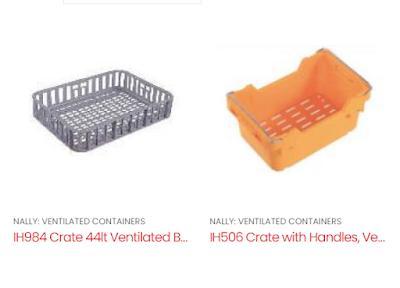How to Properly Clean and Maintain Your Plastic Crates for Longevity?
In Sydney, plastic crates are versatile and
durable storage solutions that find their place in various industries, from
agriculture and food service to manufacturing and logistics. To ensure their
longevity and optimal functionality, proper cleaning and maintenance are
essential. Neglecting these steps can result in premature wear and tear,
contamination risks, and decreased efficiency. Here’s how to clean and maintain
your plastic crates Sydney effectively to keep them in top condition.
Cleaning Your Plastic Crates
Before you begin cleaning your mega bins Sydney,
make sure you have all the necessary supplies on hand. You'll need a hose or
pressure washer, a scrub brush or broom, mild detergent, a bucket, and a soft
cloth or sponge.
·
Empty the Crates: Ensure that your crates are empty
and free of any debris, food particles, or residues. Remove any loose items and
give the crates a quick shake to dislodge loose dirt and dust.
·
Rinse Thoroughly: Use a hose or pressure washer to
rinse the crates thoroughly. Start from the top and work your way down,
ensuring you remove all loose dirt and debris.
·
Apply Mild Detergent: In a bucket, mix a solution of
mild detergent and water. Avoid using harsh chemicals or abrasive cleaners, as
they can damage the plastic. A gentle dish soap or a commercial plastic cleaner
works well.
·
Scrub Gently: Dip your scrub brush or sponge into the
soapy solution and gently scrub the crates, paying special attention to areas
with stains or stubborn grime. Avoid using excessive force, as this can cause
scratches.
·
Rinse Again: After scrubbing, rinse the crates
thoroughly to remove any soap residue. Make sure there is no lingering
detergent as it can attract dirt and grime.
·
Sanitize (if needed): In cases where hygiene is
crucial, like in food storage or healthcare settings, you may want to sanitize
the plastic crates. Use a food-safe sanitizing solution or a mixture of water
and white vinegar. Apply the solution, let it sit for a few minutes, and then
rinse thoroughly.
·
Dry Completely: Allow the plastic crates to air dry
completely before stacking or using them again. Drying in the sun can help kill
any remaining bacteria and prevent mold growth.
Maintenance Tips for Plastic Crates
Routine inspections are essential to catch any
cracks, damages, or wear and tear early on. If you notice any issues, address
them promptly to prevent further damage.
·
Avoid Overloading: One of the most common reasons for
plastic crate damage is overloading. Ensure that you do not exceed the
manufacturer's recommended weight limit for your crates. Overloading can lead
to warping or cracking.
·
Proper Stacking: When stacking plastic crates, use
caution. Stack them evenly, and avoid overloading the lower crates, as
excessive weight can cause deformation.
·
Use Correctly: Always use plastic crates for their
intended purpose. Misusing them, such as standing on them or using them as
makeshift stools, can lead to damage.
·
Store Correctly: When not in use, store your plastic
crates in a dry, cool, and well-ventilated area. Avoid exposing them to direct
sunlight for extended periods, as UV radiation can weaken plastic over time.
·
Avoid Extreme Temperatures: Extreme temperatures can
affect the durability of plastic crates. If possible, store them away from
areas prone to extreme heat or cold.
·
Repair Damages: If you notice any cracks or minor
damages, consider repairing them using plastic welding or adhesive designed for
plastics. This can extend the life of your crates.
Conclusion
Properly cleaning and maintaining your plastic crates
is crucial for ensuring their longevity and functionality. Regular cleaning
removes dirt and contaminants, while routine maintenance prevents damages and
extends their lifespan. By following the steps outlined in this guide, you can
keep your plastic crates in excellent condition and make the most of your
investment. Remember, a little care and attention go a long way in preserving
these versatile storage solutions.




Comments
Post a Comment